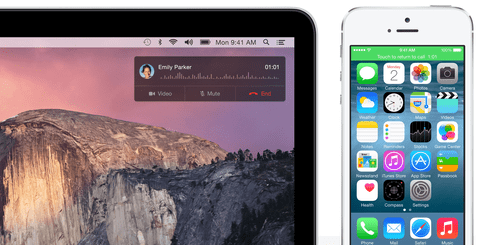iOS 8 and 10.10 - Symbiotic Harmony

Image credit: Apple.com
For years I have had (and I know many others) the fear of the iOSification of OS X, where OS X slowly regressed from desktop operating system to iOS stand-in. I was unnerved by Lion and Mountain Lion’s feature set of Mac App Store, Push Notifications, Natural Scrolling, Launchpad, full screen apps, GateKeeper and Game Center.
10.9 was either the eye in the storm or the pivot away from borrowing from iOS, which amounts to the best OS X upgrade since 10.3 which drastically improved OS X to the point that it was no longer necessary to boot OS 9. Mavericks may haven’t had much on the exterior, instead of superficial iOS feature looting you had truly desktop features: tabbed finder, tags, time coalescing, app napping, compressed memory which resulted in a magical update that improved performance and increased battery life.
Now we’re getting a unified vision of the path of iOS and OS X, its a unified universe where each operate independently but when paired unlocked a unified experience that no other can offer. Start writing and e-mail and resume on your Mac. Airdrop files easily from iOS to OS X and back. Tether to your iPhone automagically. For the user, the experience becomes even more seamless. It exemplifies the old Steve Jobs maxim: “It just works!”
Developers as are thrown a much needed bone with SpriteKit, Scenekit, Cloudkit, HomeKit and of course Swift. If Mavericks was the retuning of OS X, then Yosemite and iOS 8 is switching the fuel.
Software may not be as exciting to consumers as hardware, but ultimately Apple real strength has always been software. Sure Apple’s hardware offerings are routinely in the highest end camp but they are easily reproduced. The software is not.